The World of Warcraft is host to a diverse set of classes and heroes. In its wide and varied lore it has its fair share of unique heroes who still tie into the class system we all know and love. The leaders of the Horde and the Alliance, Sylvanas Windrunner and Anduing Wrynn, both fall into typical classes. The former is of course the ideal archetype of a ranger or Hunter, while the High King himself has fallen more into the ways of a Paladin as Battle for Azeroth has progressed. While there are some classes, like the poor monk, who have an under-representation of lore characters, generally every major player falls into one archetype or another.
That is save for the Blademaster.
The Blademaster has been a class of the Warcraft universe since even before Azeroth opened up into an MMORPG. First debuting in Warcraft III the enigmatic masters of the blade were seen as peerless gladiators of steel. Players were first introduced to them during the Human Campaign where the demon worshipping Blackrock Clan, led by a Blademaster, threatened the residents of Strahnbrad. These elusive warriors later returned as heroes for the Horde, representing the Orcs. But what is a Blademaster?
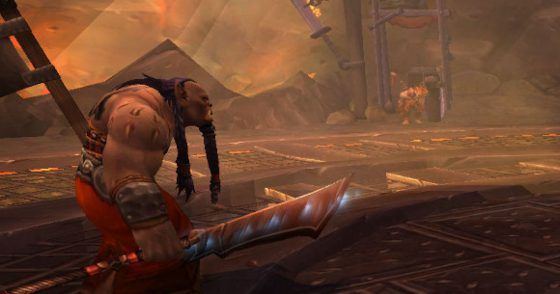
Traditionally of the Burning Blade clan, who later devolved into a demonic Orcish cult, the Blademasters were lightly-armored melee troops. Wielding swords, polearms, or other single-bladed weaponry, they charge into the heat of battle with little hesitation and incredible speed. Using their years of experience and training they utilized stealth, guile, and incredible mastery of their weapons to slay their way through dozens of enemies single-handedly. Most are subversive combatants seeking out vulnerable aspects of the enemy’s forces, though they are just as willing to cross blades with another foe.
Blademasters carved their way through the battlefield with multiple abilities. They could become whirlwinds of living steel with their mighty speed. With a keen eye, they could cleave open gaps in the mightiest pieces of armour with a single strike. It was even believed that they possessed superhuman or magical powers as they moved quick enough to leave a phantom mirror image of themselves. Some could even disappear, fast enough to seem invisible to the naked eye.
The way of the sword doesn’t begin and end with the Horde, however. Many races, including the Orcs greatest enemies, employ Blademasters of different skills and forms.
The Orcish Horde: The First Blademasters
The Orcish Horde that first invaded Azeroth employed the Blademasters primarily as generals or espionage leaders. As such, their teachings have passed down further amongs their own kind and Orcs are generally believed to posses the greatest number of the elusive warriors. Later recruited by Warchief Thrall, the dedicated themselves both to preserving the New Horde, and rising above the ashes of their dark past. They are unquestionably dedicated to their personal code of honor.
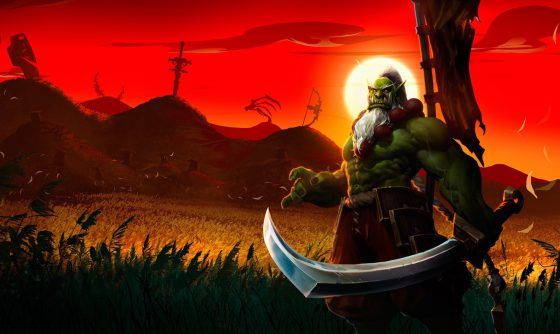
From the Burning Blade most learned the secret of their namesake, Blazegrease. A thick, smelly oil, the Burning Blade doused their weapons liberally with the disgusting liquid. Due to its oily nature it could be lit by a flint prior to a fight or with even an errant spark in the heat of battle. Orcish Blademasters also wear heavy Sashimono Banners that identify them to their compatriots; its easy to see where the battle is the thickest, for the Blademaster is surely there.
For those Orcs that remained on Draenor, and became the Fel Horde, many of its leaders would too become Blademasters. Unlike the noble offshoots of their kin, these Fel Orcs lost themselves entirely to their bloodlust. Whereas the speed of a true Blademaster is honed over years of training, these darker reflections are fueled by demonic powers. These Blademasters rose to prominence in Magtheridon’s army, even becoming personal bodyguards of the Lord of Outland.
Lightforged: The Army of the Light's Generals
Why yes, the Orc’s greatest enemies too have Blademasters, though just one official member that we know of. Blademaster Telaamon was introduced during Legion’s last expansion as a General in the Army of the Light. Leading Captain Fareeya’s ground forces, he and the other generals had nearly secured most of Mac’Aree single handedly before the Burning Legion discovered their presence. Later he would lead the siege upon Nazmir, capturing Rokhan and using his mirror images to keep the Horde at bay.
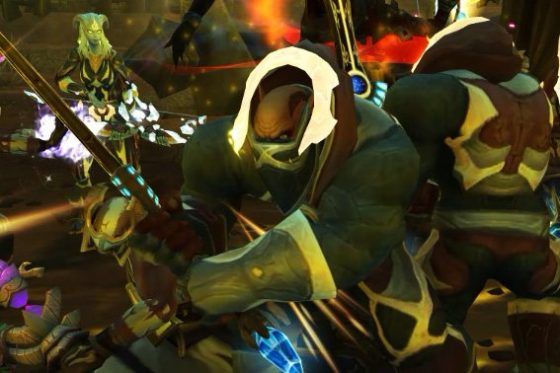 Blademasters of the Army of the Light.
Blademasters of the Army of the Light.
Unlike Orcish Blademasters, Telaamon relies more on his light-based roots for his magical effects. Where the endless years of war has sharpened his martial prowess instead of formal training, his magic could do things traditional Blademasters simply could not. In capturing the Shadow Hunter Rokhan, he managed to bind him with chains made of Light. His Mirror Images did not require him to be physically present in order to persist and were strong enough to require two people to defeat. However once these images were defeated Telaamon was weakened significantly.
Blademasters of Azeroth
The wider enemies of Azeroth too have their own masters of steel. The most well known is one of the more chief members of the Blackfang Tribe. These Saberon were the fiercest of Draenor’s feline savages and carved a deep territory in the jungles of Tanaan. With their naturally sharp and durable claws, incredible agility and natural command of the jungle most had no need to take up a blade. When coupled with their sheer ferocity, a Saberon could carve an Orc apart in mere moments. Krell the Serene, however, was a powerful Blademaster of the tribe. Armed with only one single-edged blade, he rose above his peers to claim leadership amongs them. Notably he seemed to ascribe to the Orc’s traditional ideas of honor and would only fight outsiders when publicly challenged.
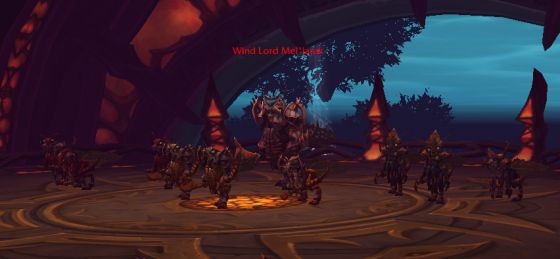
The Mantid Hordes also contained their own Blademasters. Trained by Wind Lord Mel’jarak, these were the elite soldiers he had fought beside during the long campaign against the Pandaren. Using their natural ability to fly, the Mantid were incredibly agile warriors to tackle. Tapping into their native hive mind they were also extremely organized, coupling tactics together soundlessly in the heat of battle. Coupled together these blows could entrap singular opponents in assuredly lethal strikes.
Arcblades: Sentinels of Suramar
Why yes, even the contemporarily magical Nightborne possess Blademasters! Often called Arcblades, these Sumarians are often employed through the Duskwatch to combat enemies. Whereas the other races use their natural strength or speed to define their skills, the Nightborne instead hone their connection to the Nightwell and their magic. Typical Arcblades empower their strikes and the keenness of their weapon with arcane based spells. Using their body as a conduit, they could increase their speed to dizzying levels in an instant, deliver bone breaking strikes with a single swing, and even tear open rifts in the fabric of space.
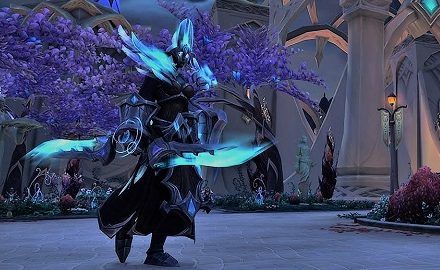
The greatest of the Arcblades was known as Aluriel, an Elisande Loyalist who became a part of the Nighthold’s elite guard. Her hunger for power eventually drew her to Suramar University where she spent her days honing not just her swordplay but her magical skill set. Eventually artificing her own weaponry and armor in the Nightwell, she became the first true Spellblade. Whereas other Blademasters used a mix of martial and magical prowess Aluriel heavily utilized the latter. She could take on a legion single-handedly, animating elemental soldiers while simultaneously attacking others.
It is believed most, if not all, Shalassian Blademasters were aligned with Elisande’s regime. While other Duskwatch rebels, such as Sigryn, utilized glaives or double-bladed swords, none have demonstrated the level of skill that Aluriel or other Arcblades have managed in the past. As such, the secrets of the art may be lost to Sumarians for all time.
With such a wide variety of distinct masters of swords throughout the World of Warcraft, we come to the real question. Why hasn’t the class been yet implemented in game? The easy answer is it already has been, but the complex answer is more spread out than that.
In discussing Orcish Blademasters, the Arms Warrior has often been seen as their player representation. In Warlords of Draenor one of the original Blademasters, Lantressor of the Blade, was designated as such. They even have several vital moves in the class’ toolkit such as Whirlwind, an ability unused by any other class in game. Retribution Paladins could also be seen to fill the niche of Lightforged Blademasters, employing spells that cripple the Undead in similar ways. Monks also have the ability Storm, Earth and Fire, which mimics the Mirror Images attack.
[caption id="attachment_307132" align="aligncenter" width="560"]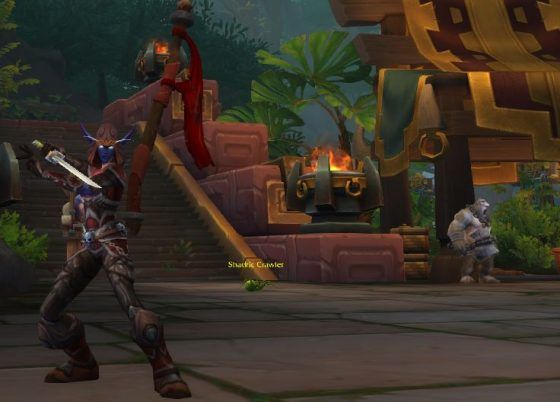 A Survival Hunter, using one of the Pennant PvP Toys.[/caption]
A Survival Hunter, using one of the Pennant PvP Toys.[/caption]
In terms of the class’ stealthier aspects, Rogues have that niche nailed down. Survival Hunters also fit the bill incredibly well possessing not only a stealth ability in Camouflage, but a ‘Critical Strike’ like ability in Mongoose Bite.
This isn’t the first time, however, that ulterior classes have been built of out similar systems or fantasies. The Demon Hunter, Legion’s Hero Class, while represented in the old tabletop RPG games, was represented in-game primarily by Rogue or Warrior characters. Warlords players will also remember the Warlock ability Metamorphosis which turned its user into an Illidain Stormrage style demon, which could effectively tank. Even Death Knights in Naxxramas, including the Four Horseman, used Paladin, Mage, Priest and Warrior abilities.
As we near the mid-way point for Battle for Azeroth its certainly time to think to the future. While perhaps the niche of a melee assassin has been taken and spread across other classes, the Blademasters are still an integral part of not just the Horde, but of other cultures across Azeroth. There are many classes across Azeroth that need an introduction somehow. Be they Wardens, Shadow Hunters, Runic Totemics or Blademasters, each has an interesting lore. Frankly, each is one I’d love to see available to classes in the near future.